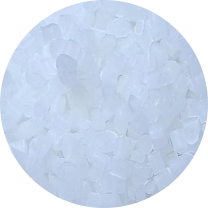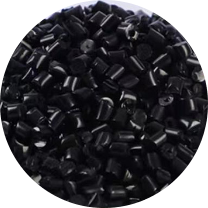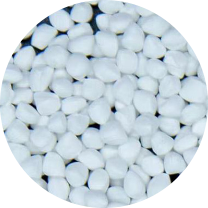Masterbatch manufacturing process and key technology analysis
Masterbatch refers to the process of uniformly dispersing high-concentration additives, pigments, fillers, etc. in a carrier resin to make a granular premix. It is used in the plastic processing process, which can effectively improve production efficiency, save raw materials, and improve the controllability of the processing process. Masterbatches are widely used in the fields of plastic coloring, functional enhancement, and modification.
The manufacturing process of masterbatch usually includes the following key steps:
1. Raw material preparation
Resin carrier: The basis of masterbatch is resin, and generally the same or similar resin type as the final plastic product is selected, such as polyethylene (PE), polypropylene (PP), polystyrene (PS), etc.
Additives: According to the purpose of the masterbatch, select appropriate additives, common ones are:
Pigments, dyes (for coloring)
Fillers (such as calcium carbonate, talc, etc.)
Additives (antioxidants, UV absorbers, flame retardants, toughening agents, etc.)
2. Mixing
Premixing: Mix additives, pigments or fillers with carrier resin in proportion. This step is usually completed by a dry powder mixer or a high-speed mixer to ensure the uniformity of the raw materials.
Wet mixing: For some pigments or additives that are difficult to disperse evenly, it may be necessary to wet mix them with a liquid carrier first, and then dry them.
3. Melt extrusion
Melting process: The pre-mixed materials are put into a twin-screw extruder or a single-screw extruder, and the carrier resin and additives are fully mixed through a high-temperature melt plasticization process to achieve uniform dispersion.
Temperature control: In this process, temperature control is crucial. Too high or too low temperature may affect the quality of the masterbatch, especially the dispersion effect of pigments and additives.
4. Granulation
Cooling and pelletizing: After extrusion, the molten mixture enters a water cooling tank for cooling and solidification, and then is cut into pellets by a pelletizer. The size of the pellets is usually 2-4mm.
Drying: Some masterbatches may contain a certain amount of moisture after pelletizing, and need to be processed by drying equipment (such as a fluidized bed dryer) to ensure that the masterbatch does not absorb moisture and avoid affecting subsequent use.
5. Quality control
Particle size inspection: Check the particle size distribution of the masterbatch to ensure that the particles are uniform and meet production requirements.
Color and dispersion test: For color masterbatch, the dispersion and color difference of the pigment need to be checked.
Performance test: such as testing the effectiveness of additives, plastic melt fluidity, etc.
Stability test: Some masterbatch products also need to be tested for thermal stability, light stability, mechanical properties, etc.
6. Packaging and storage
The finished masterbatch should be properly packaged, commonly in plastic bags, paper bags or jumbo bags, and stored in a dry, cool and well-ventilated place to avoid moisture and degradation.
7. Application
In actual applications, masterbatches are usually processed together with basic plastics (such as polyethylene, polypropylene, etc.) in injection molding machines, extruders and other equipment. After heating and melting, the additives in the masterbatch will be evenly dispersed into the final plastic product.
The manufacturing process of masterbatch is a high-precision process that requires strict control of temperature, pressure and mixing ratio at each link to ensure that the quality of the masterbatch meets the expected standards. Through this process, various functional and decorative properties can be given to plastic products without changing the plastic substrate.

PA-103 MULTIPURPOSE HIGH PERFORMANCE STABILITY BLACK MASTERBATCH
prevNo previous article
nextCarbon Black Masterbatch: Multifunctional Additive in the Plastic Industry


 English
English 中文简体
中文简体 한국어
한국어 عربى
عربى













